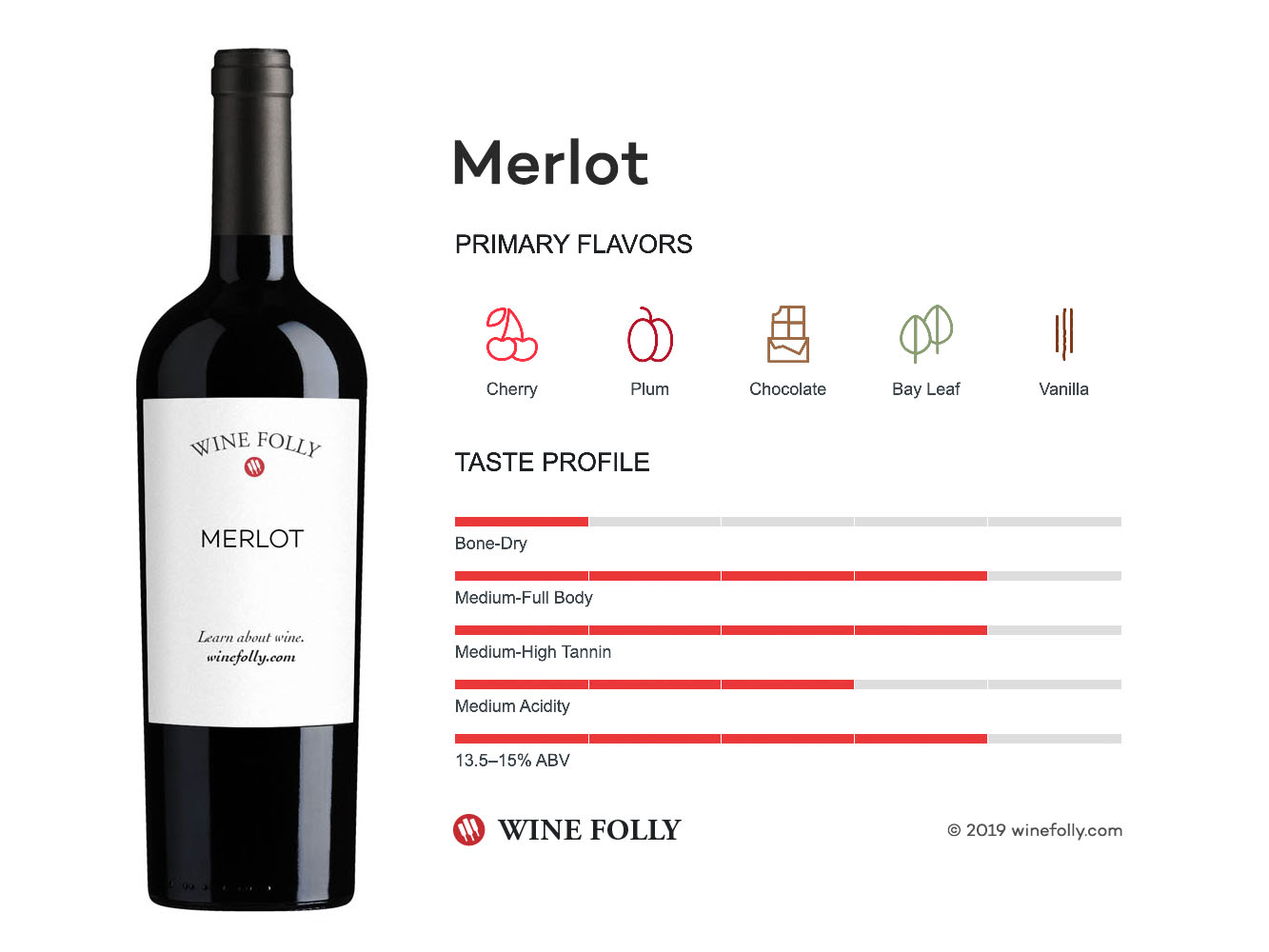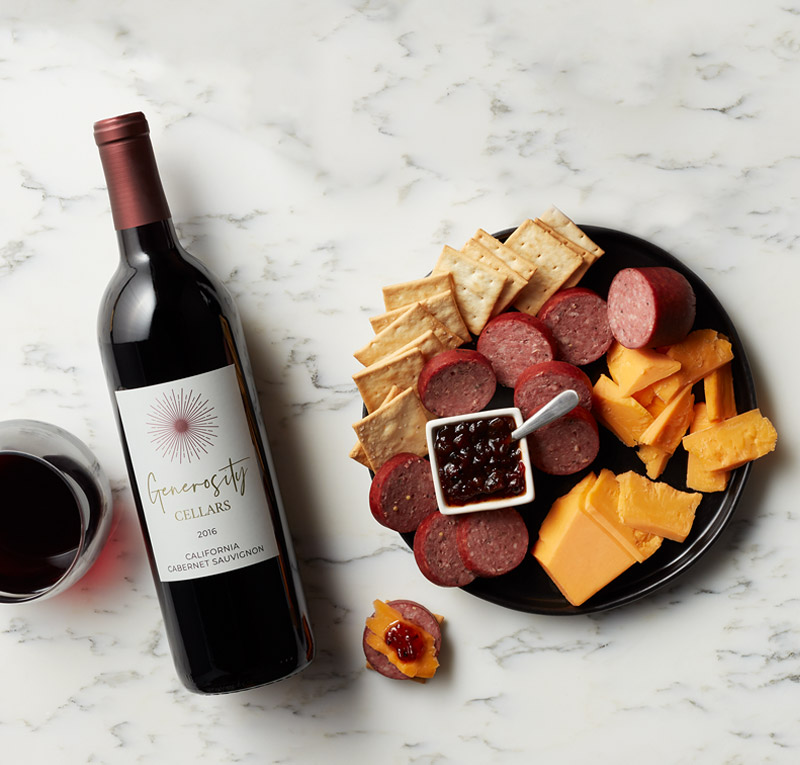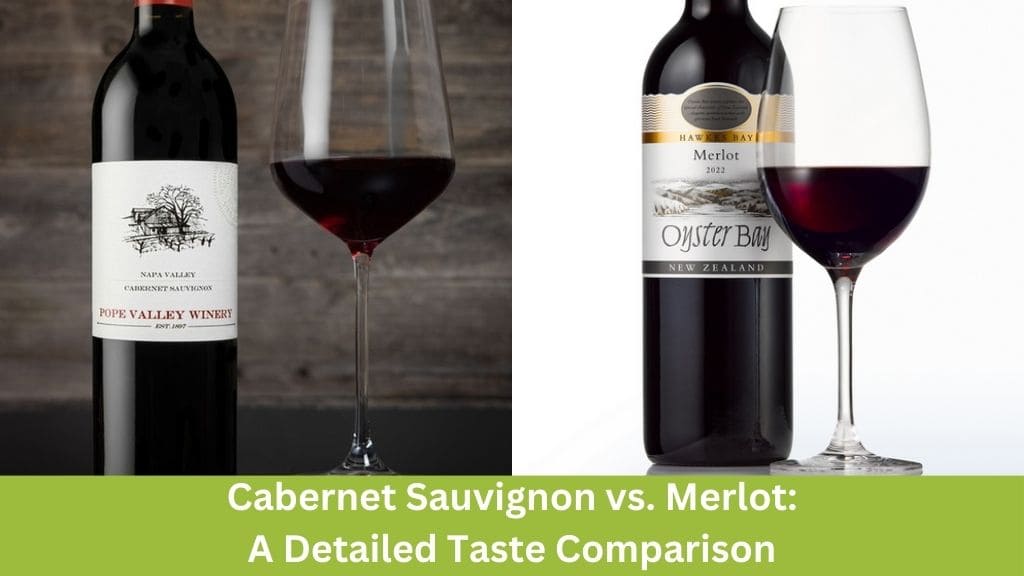Wine enthusiasts often find themselves comparing Cabernet Sauvignon and Merlot, two of the most popular red wine varieties globally. Whether you’re a novice or a seasoned connoisseur, understanding the nuances between these two wines can enhance your appreciation and selection process. This blog post delves deep into the taste profiles, origins, and pairing suggestions for Cabernet Sauvignon and Merlot, providing a comprehensive guide to help you make an informed choice.
Cabernet Sauvignon and Merlot are staples in the world of red wine, each offering unique characteristics that appeal to different palates. While both originated in Bordeaux, France, their distinct flavor profiles and versatility have made them favorites worldwide. This post will explore the key differences and similarities between these two varietals, including their tasting notes, food pairings, and regional influences.
| Aspect | Cabernet Sauvignon | Merlot |
|---|---|---|
| Flavor Profile | Bold, robust, black currant, dark fruits | Smooth, fruit-forward, black cherry, plum |
| Tannin Level | High | Moderate to low |
| Acidity | High | Moderate |
| Body | Full | Medium to full |
| Aging Potential | High | Moderate |
| Secondary Flavors | Tobacco, pepper, cedar | Chocolate, vanilla, bay leaf |
The alcohol content of Cabernet Sauvignon and Merlot typically ranges from 13.5% to 14.5%, considered relatively high compared to other wine varieties.
Tasting Notes
Cabernet Sauvignon

Cabernet Sauvignon is renowned for its bold and robust flavors, making it a favorite among those who enjoy a more intense wine experience. Here are some of the primary tasting notes associated with Cabernet Sauvignon:
- Black Currant and Dark Fruits: The dominant flavors in Cabernet Sauvignon are often black currant, blackberry, and plum. These dark fruit notes give the wine a rich and concentrated taste.
- Secondary Flavors: Depending on the region and aging process, Cabernet Sauvignon may also exhibit hints of tobacco, green pepper, cedar, and leather. These secondary flavors add complexity and depth.
- Body and Tannins: Cabernet Sauvignon is typically full-bodied with high tannin levels. The tannins contribute to the wine’s structure and aging potential, making it a wine that can improve significantly over time.
- Acidity and Finish: This wine usually has a higher acidity level, which balances the robust flavors and gives it a crisp finish.
Merlot

Merlot, on the other hand, is known for its smoother and more approachable profile. Here are the key tasting notes for Merlot:
- Red and Black Fruits: Merlot is characterized by its fruit-forward flavors, including black cherry, raspberry, and plum. These flavors are often more pronounced and accessible than those in Cabernet Sauvignon.
- Secondary Flavors: Merlot can also have notes of chocolate, bay leaf, and vanilla, especially when aged in oak. These elements add a layer of richness and warmth.
- Body and Tannins: Merlot is generally medium to full-bodied with lower tannin levels compared to Cabernet Sauvignon. This results in a softer, rounder mouthfeel that many find appealing.
- Acidity and Finish: With lower acidity, Merlot offers a smoother finish, making it easier to drink, even for those new to red wine.
Flavor Profiles and Climate Impact
The climate in which the grapes are grown significantly influences the flavor profiles of both Cabernet Sauvignon and Merlot. Here’s how climate impacts each wine:
Cabernet Sauvignon
- Warm Climate: In warmer climates, such as California’s Napa Valley, Cabernet Sauvignon grapes develop more pronounced fruit flavors. These wines tend to be fruitier and more opulent.
- Cool Climate: In cooler regions like Bordeaux, France, Cabernet Sauvignon exhibits more herbaceous and earthy notes. The cooler climate enhances the wine’s acidity and tannin structure.
Merlot
- Warm Climate: Warm climate Merlot, such as those from California or Australia, are typically fruitier with softer tannins. The warmer temperatures help to ripen the grapes fully, resulting in richer flavors.
- Cool Climate: In cooler climates like Bordeaux’s Right Bank, Merlot grapes produce wines with higher tannin levels and more earthy, mineral notes. These wines often have a more complex and structured profile.
Food Pairing Suggestions
Choosing the right food to pair with your wine can elevate your dining experience. Here are some suggestions for pairing Cabernet Sauvignon and Merlot with various dishes:
Cabernet Sauvignon

Cabernet Sauvignon’s bold flavors and high tannins make it an excellent match for rich, hearty dishes. Consider pairing it with:
- Grilled Steaks and Burgers: The wine’s tannins cut through the fat in red meat, enhancing both the food and the wine.
- Braised Dishes: Slow-cooked meats like beef short ribs or lamb shank pair wonderfully with Cabernet Sauvignon, as the wine’s robustness complements the savory flavors.
- Cheddar and Gouda: Aged cheeses with strong flavors are a great match for the intense taste of Cabernet Sauvignon.
Merlot

Merlot’s versatility and softer profile make it suitable for a wide range of dishes. Some ideal pairings include:
- Tomato-Based Pasta: The acidity in tomato sauces pairs well with Merlot’s fruit-forward flavors, creating a harmonious balance.
- Braised Meat: Dishes like coq au vin or braised pork benefit from Merlot’s smooth texture and rich fruit flavors.
- Pizza: The wine’s softness and fruitiness complement the various toppings, especially those with tomato sauce and cheese.
Regional Variations
Both Cabernet Sauvignon and Merlot are grown in various regions around the world, each imparting unique characteristics to the wines. Here’s a look at some notable regions:
Cabernet Sauvignon
- Napa Valley, California: Known for producing some of the world’s most renowned Cabernet Sauvignons, Napa Valley wines are typically full-bodied with rich fruit flavors and velvety tannins.
- Bordeaux, France: In Bordeaux’s Left Bank, Cabernet Sauvignon is often blended with Merlot and other varietals, resulting in wines with a complex structure and aging potential.
- Chile: Chilean Cabernet Sauvignons are gaining popularity for their balance of fruit and earthiness, often with a more approachable price point.
Merlot
- Bordeaux, France: Bordeaux’s Right Bank, particularly regions like Saint-Émilion and Pomerol, is famous for its Merlot-dominated blends, which are known for their elegance and aging potential.
- California: California Merlots are typically fruit-forward and accessible, offering a softer alternative to the region’s robust Cabernets.
- Washington State: Washington Merlots often have a unique balance of New World fruitiness and Old World structure, making them a favorite among wine enthusiasts.
Blending Cabernet Sauvignon and Merlot

One of the fascinating aspects of these two varietals is their ability to complement each other when blended. This is best exemplified by the famous Bordeaux blends, where the strengths of each grape are utilized to create a balanced wine.
Benefits of Blending
- Cabernet Sauvignon: Brings high acidity and tannin, which provide structure and aging potential.
- Merlot: Adds softness, fruitiness, and lower tannins, making the blend more approachable and balanced.
Famous Blends
- Bordeaux Blends: These blends typically consist of Cabernet Sauvignon, Merlot, and sometimes Cabernet Franc, Petit Verdot, and Malbec. The exact proportions vary by region and producer but the goal is to create a wine that balances the strengths of each varietal.
- New World Blends: In regions like California and Australia, winemakers often experiment with blending these two varietals to create unique expressions that highlight the best of both grapes.
Top Recommendations
If you’re looking to explore some exemplary bottles of Cabernet Sauvignon and Merlot, here are our top picks:
Top Cabernet Sauvignon Wines

- Mascota Vineyards Unanime, 2017 – Mendoza, Argentina: This wine offers a complex mix of dark fruits, tobacco, and spices, with a full body and firm tannins.
- Carmen Gran Reserva Cabernet Sauvignon, 2018 – Maipo Valley, Chile: Known for its balance of fruit and earthy notes, this wine is elegant with a long finish.
- Olema Cabernet Sauvignon, 2018 – Sonoma County, California: A rich and opulent wine with flavors of blackberry, plum, and hints of vanilla and oak.
Top Merlot Wines

- Luc Pirlet Merlot – Vins de Pays d’Oc, France: This Merlot is smooth and fruit-forward with flavors of black cherry and plum, complemented by subtle chocolate notes.
- Radius Merlot – Washington: A versatile and approachable wine, Radius Merlot offers a harmonious balance of fruit, tannin, and acidity.
- Mascota Vineyards Unanime Merlot, 2018 – Mendoza, Argentina: This Merlot stands out with its rich fruit flavors, soft tannins, and hints of chocolate and spice.
Origin and Growing Regions
Understanding the origin and terroir of Cabernet Sauvignon and Merlot adds another layer of appreciation for these wines.
Bordeaux, France
Both Cabernet Sauvignon and Merlot trace their origins to Bordeaux, where they are integral to the region’s wine heritage.
- Left Bank (Cabernet Sauvignon): The gravely soil and slightly warmer climate of Bordeaux’s Left Bank are ideal for Cabernet Sauvignon, which thrives in these conditions and produces wines with firm tannins and complex flavors.
- Right Bank (Merlot): Merlot dominates the cooler, clay-limestone soils of the Right Bank, producing wines that are softer and more approachable, with a greater emphasis on fruit.
Global Expansion
These varietals have since spread across the globe, adapting to various climates and soils, which has led to a diverse range of expressions.
- Napa Valley, California: Both grapes flourish here, with Cabernet Sauvignon achieving iconic status for its bold and rich profile.
- Chile: The country’s varied climate allows for excellent expressions of both Cabernet Sauvignon and Merlot, often with a distinctive balance of fruit and earthiness.
- Australia: Known for producing powerful and fruit-forward wines, Australian winemakers often create blends that highlight the best characteristics of both grapes.
When to Choose Cabernet Sauvignon vs. Merlot?

Deciding between Cabernet Sauvignon and Merlot can depend on several factors, including the occasion, the meal, and personal preference.
For Bold and Rich Flavors
Choose Cabernet Sauvignon if you prefer:
- Intense, robust flavors
- Higher tannins and acidity
- Wines that age well and develop complexity over time
- Pairing with rich, fatty foods
For Smooth and Versatile Wines
Choose Merlot if you prefer:
- Softer, fruit-forward flavors
- Lower tannins and acidity
- Wines that are approachable and easy to drink young
- Versatile food pairings
How to Host a Blind Tasting?
If you’re still unsure which wine suits your palate best, consider hosting a blind tasting. This can be a fun and educational way to explore the differences and similarities between Cabernet Sauvignon and Merlot.
Steps to Host a Blind Tasting
- Select the Wines: Choose 2-3 bottles of Cabernet Sauvignon and Merlot each. Include wines from different regions like California, France, and Argentina for a diverse experience.
- Cover the Labels: Use brown paper bags or foil to cover the labels and number each bottle. This ensures the tasting is blind and unbiased.
- Pour and Taste: Pour a small tasting size for each guest. Encourage them to note the flavors, body, tannins, and acidity.
- Guess and Reveal: Ask guests to guess which wine is which and perhaps even the region. Reveal the wines and discuss the findings.
- Pair with Food: Complement the tasting with suggested food pairings to enhance the experience.
Conclusion
Cabernet Sauvignon and Merlot each offer unique tasting experiences that cater to different preferences and occasions. By understanding their distinct characteristics, regional influences, and ideal pairings, you can make more informed choices and enjoy these wines to their fullest. Whether you prefer the bold, structured profile of Cabernet Sauvignon or the smooth, fruit-forward nature of Merlot, both wines have something exceptional to offer. So, why not explore both and enjoy the best of both worlds?
I’m Chen Mina, from Vol de Nuit, who has a special passion for bartending, especially mixing wine, beer, and cooktail. Here you will find content about alcoholic beverages, I will bring you knowledge that few people know about this drink.





